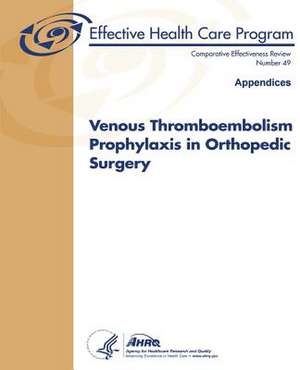Venous Thromboembolism Prophylaxis in Orthopedic Surgery (Appendices)
Autor U. S. Department of Heal Human Services, Agency for Healthcare Resea And Qualityen Limba Engleză Paperback
Preț: 321.53 lei
Preț vechi: 338.46 lei
-5% Nou
Puncte Express: 482
Preț estimativ în valută:
61.52€ • 64.41$ • 50.91£
61.52€ • 64.41$ • 50.91£
Carte disponibilă
Livrare economică 17-31 martie
Preluare comenzi: 021 569.72.76
Specificații
ISBN-13: 9781484921289
ISBN-10: 1484921283
Pagini: 670
Dimensiuni: 191 x 235 x 34 mm
Greutate: 1.13 kg
Editura: CREATESPACE
ISBN-10: 1484921283
Pagini: 670
Dimensiuni: 191 x 235 x 34 mm
Greutate: 1.13 kg
Editura: CREATESPACE
